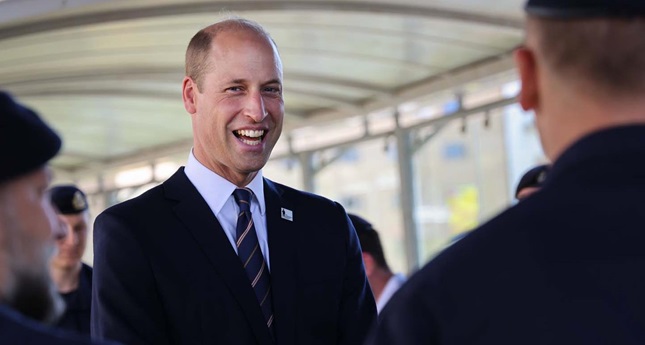Royal expert reveals privacy concerns and distractions as reasons behind Prince Louis’s limited public appearances
Prince Louis, the youngest child of Prince William and Princess Kate, has noticeably missed several high-profile royal events recently, including key sports fixtures attended by his siblings. Royal fans and commentators have begun to speculate about the reasons behind his absence, with one expert suggesting that it involves more than just age-related considerations.
Recently, the spotlight was on Prince George and Princess Charlotte as they joined their parents at major events. Prince George accompanied the Prince of Wales to the Euros final in Berlin, while Princess Charlotte attended Wimbledon with Princess Kate, who is undergoing cancer treatment. In contrast, Prince Louis, who is just six years old, was absent from these outings.
Embed from Getty ImagesRoyal commentator Richard Fitzwilliams sheds light on this pattern of absences, explaining that age is a significant factor. Louis’s young age makes him less likely to attend such events compared to his older siblings. However, Fitzwilliams suggests that there is more to it. According to him, the younger children are often kept away from the spotlight to preserve their privacy and avoid unwanted distractions. Louis’s playful and sometimes cheeky demeanour could potentially divert attention away from the main events, a scenario the Royal Family prefers to avoid.
Fitzwilliams emphasizes the importance of maintaining a balance between public interest and the privacy of young royals. He points out that while the media and public are eager to see all three of William and Kate’s children, the youngest’s behaviour could steal the limelight, which is not ideal for significant public occasions. This strategy helps in managing how much personal information and public attention the young royals are exposed to.
Despite his lower profile, Prince Louis remains an integral part of the family. Recent images of him and Princess Charlotte in personalized football shirts during the Euro 2024 final illustrate that he is involved in family activities, even if he doesn’t always appear in the public eye.
Looking forward, there is speculation about whether any of the Wales family members might attend the 2024 Olympics in Paris. Fitzwilliams suggests that if there are high-profile events involving the British team or if there is a particular interest, William and possibly George might make an informal visit to Paris. This potential appearance would align with the family’s approach to public engagements, balancing visibility with personal privacy.
Analysis
Political: The Royal Family’s handling of Prince Louis’s public appearances reflects a strategic approach to managing their image and influence. By carefully selecting which events their children attend, the family maintains control over their public narrative. This strategic discretion helps to avoid any potential political controversies or distractions that could arise from unsanctioned or unplanned public appearances. The choice to shield younger royals from certain high-profile events also reflects a broader trend of modernizing royal protocols to ensure that public engagements remain focused and controlled.
Social: Prince Louis’s limited public presence mirrors ongoing societal debates about privacy and the role of children in public life. In an age where media scrutiny is intense, there is a growing concern about the impact of constant public exposure on young children. The Royal Family’s decision to minimize Louis’s appearance aligns with societal norms that prioritize the privacy and well-being of children. This approach also highlights the broader societal shift towards recognizing and respecting the personal boundaries of public figures, especially their families.
Racial: While the event itself doesn’t directly relate to racial issues, the Royal Family’s approach to managing their children’s public appearances can reflect broader themes of representation and diversity. The way the Royal Family handles their children’s exposure can influence public perceptions and discussions about race and representation, particularly in how diverse and inclusive the royal family appears to be. However, the focus remains primarily on privacy and public engagement rather than racial dynamics.
Gender: The decisions regarding Prince Louis’s public appearances do not explicitly relate to gender, as they are based on age and the potential for distraction. However, the Royal Family’s approach to balancing public and private life can indirectly reflect gender norms and expectations, especially in how male and female children are treated similarly in terms of privacy and public engagement. The consistent handling of all three children, regardless of gender, suggests an effort to maintain equality in their public roles.
Economic: The Royal Family’s management of public appearances also has economic implications. By controlling which events their children attend, they can influence media coverage and public interest. This strategic approach helps to maintain the focus on key events and ensures that the Royal Family’s public image remains positive. Additionally, by avoiding distractions and potential controversies, the family can protect their economic interests, including those related to royal endorsements, media deals, and public engagements.
